Planning your own trip? Prepare for your trip
Use Rough Guides' trusted partners for great rates
Plan and book your private, tailor-made tour with vetted local experts
From melting glaciers to the world’s last Blockbuster store, discover 20 wildly different places, all at risk of disappearing. For many of these places, tourism could be a desperately-needed lifeline. Go now, while you still can.
This article is an excerpt from our beautiful new book, Rough Guides Vanishing Places, which features 100 of the world’s most fascinating and fragile locations.

Kolmanskop in Namibia disappears beneath the sand © Shutterstock
Threat: Encroaching desert sands
Legend has it that, in Kolmanskop’s heyday, people crawled through town on their hands and knees, filling jam jars with diamonds scooped easily from the sand. Diamonds were discovered in the southern Namibian town in 1908 by a railway worker and the remote outpost quickly exploded into a boomtown, complete with a casino, ice factory, and the southern hemisphere’s first X-ray machine.
By 1912, Kolmanskop produced 12% of the world’s diamonds. Yet, richer diamond deposits were later found elsewhere and the town was empty by the 1950s. Today, its wind-battered houses are knee-deep in sand. With a permit, visitors can explore the eerie ghost town, helping fund preservation before the desert swallows it entirely. Get in while you still can.
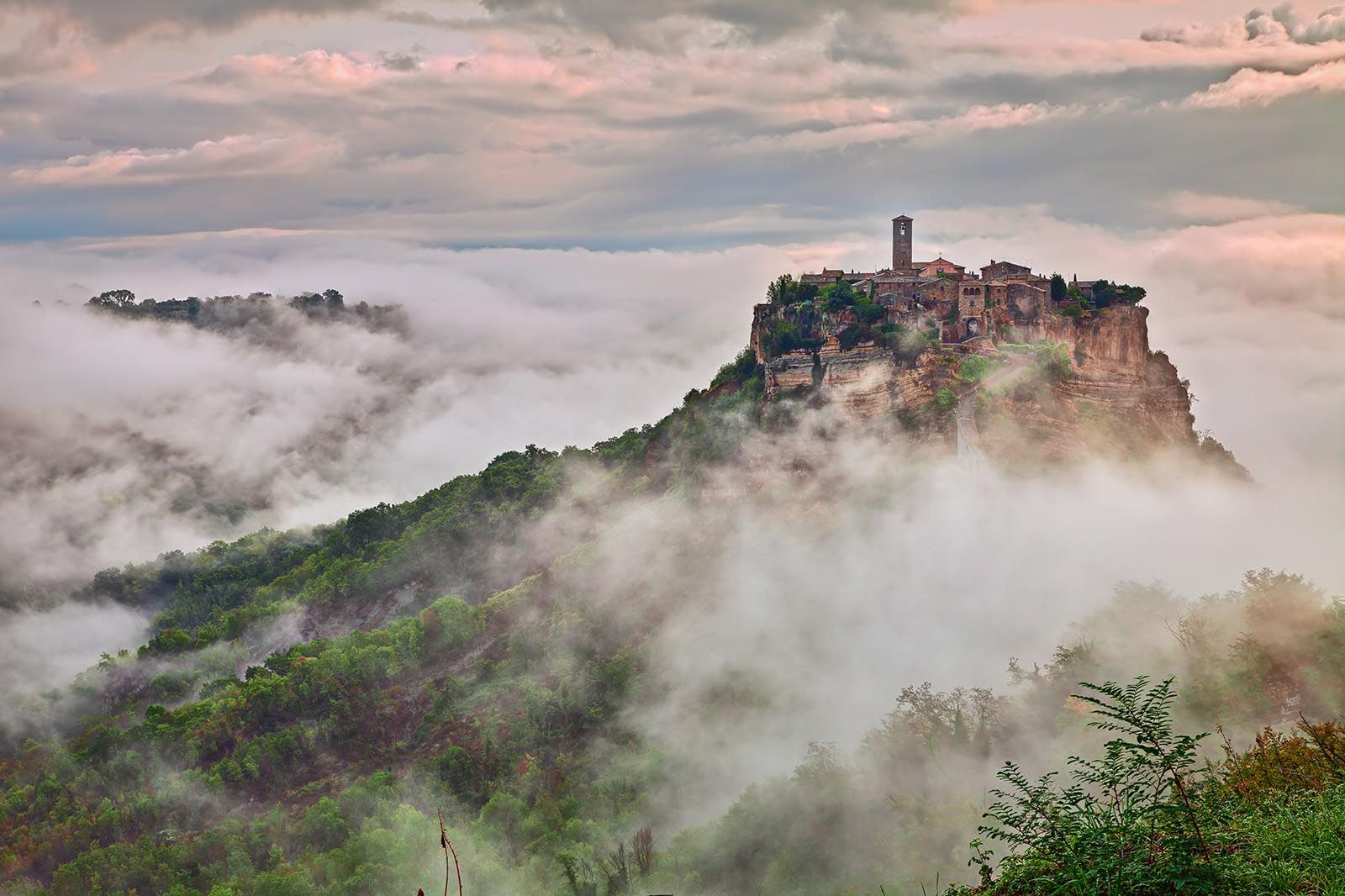
Italy's Civita di Bagnoregio surrounded by mist © Shutterstock
Threat: Erosion
The Medieval village of Civita di Bagnoregio perches on a rocky outcrop in central Italy, tethered to the modern world by a long narrow footbridge. When mist rolls into the canyon below, the village looks like it’s floating. Inside, Medieval stone buildings and arched doorways are remarkably well preserved.
Nicknamed the Dying Town, Civita di Bagnoregio teeters on the edge – literally – as wind, rain, and landslides gnaw away at its foundation. Only a handful of residents remain, but a slow trickle of curious travelers, artists, and academics are finding their way across the bridge. Still under the radar for many tourists, the Dying Town needs external attention and support, before gravity and time finally win.

Eaton Fire burning in Aladena, LA County © Shutterstock
Threat: Wildfires
In January 2025, Los Angeles County was hit by the worst wildfires in its history. Fueled by extreme winds and drought exacerbated by climate change, fires scorched over 15,000 hectares (60 square miles). The Palisades Fire ravaged Pacific Palisades, Topanga, and Malibu, turning clifftop mansions to ash. In Altadena, the Eaton Fire destroyed nearly half of the area’s Black-owned homes, dealing a harsh blow to its cultural legacy. Damages are expected to top $250 billion, making this the costliest US disaster in history.
While some residents have left for good, others are rebuilding. Donations poured in, volunteers mobilized, and tourism took on new meaning. Still off many travelers’ radar, LA County is asking visitors to return, to help the area heal. LA officials have issued a clear message to travelers: We’re counting on you.
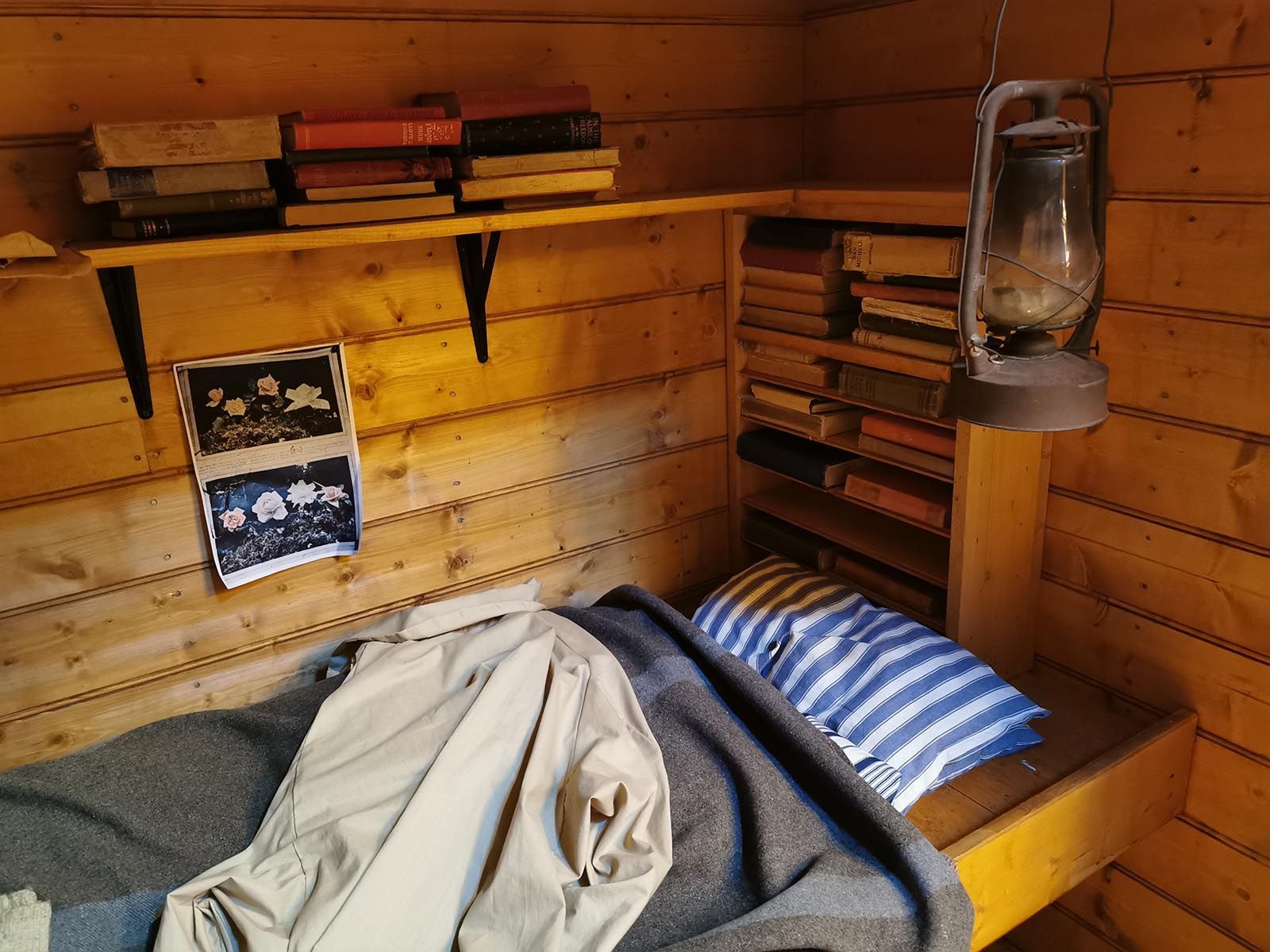
Inside Mawson's Huts Replica Museum, Hobart, Australia © Shutterstock
Threat: Extreme weather
In the frostbitten wilderness of Antarctica’s Commonwealth Bay, there is an unexpected slice of civilization: four snow-covered pine huts standing firm against time and brutal icy winds. They are Mawson’s Huts, the base of the 1911–14 Australasian Antarctic Expedition and one of only six surviving sites from the Heroic Era of Antarctic Exploration (1897-1922).
Inside the huts, it feels like the team just left – books, food tins, and a half-burned candle remain untouched. Slowly, ice and snow are reclaiming the site. Conservation is difficult and expensive, with limited expeditions funded by Australia and nonprofits. Some tour companies do go, and a replica in Hobart lets travelers step inside Mawson’s world and support the preservation of this extraordinary piece of history.
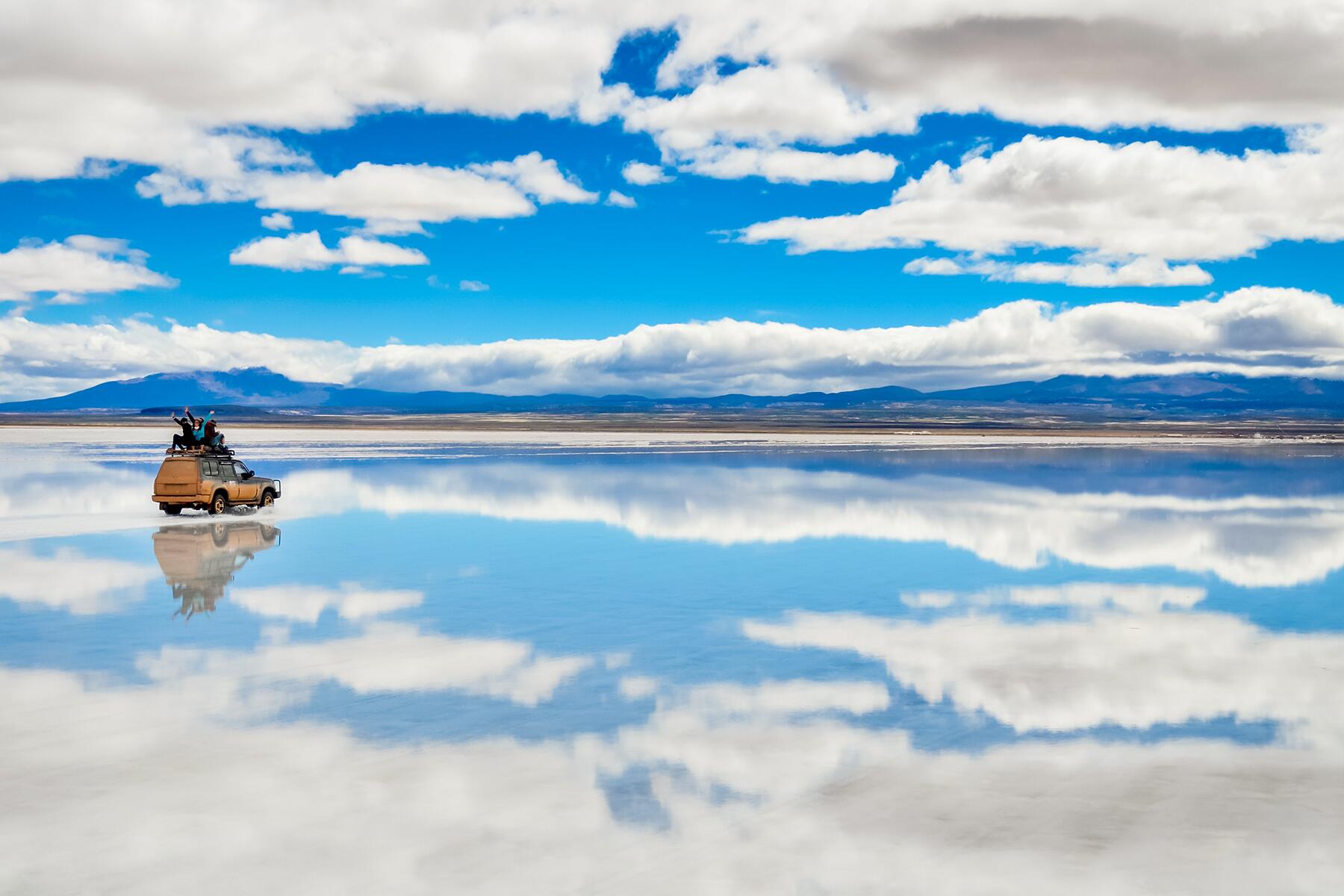
Flatlining? Salar de Uyuni, Bolivia © Shutterstock
Threat: Lithium mining and climate change
Perched high on a Bolivian plateau, Salar de Uyuni is the world’s largest salt flat. When it floods, the great white expanse becomes an otherworldly mirror of the sky. Its flat featureless surface eliminates depth perception, making objects and people appear miniscule or gigantic, and visitors spend hours creating bizarre optical illusions.
However, below the eerily beautiful surface, trouble is brewing. Climate change is threatening the salt flat’s fragile crust, and massive lithium reserves beneath it are attracting industrial attention.
Bolivia’s first large-scale lithium plant opened near Uyuni in 2023, sparking concerns about water use and environmental damage. Locals worry for their livelihoods, while critics fear the loss of an irreplaceable landscape. Travelers still flock to experience the surreal beauty, but they may be witnessing a wonder on borrowed time.
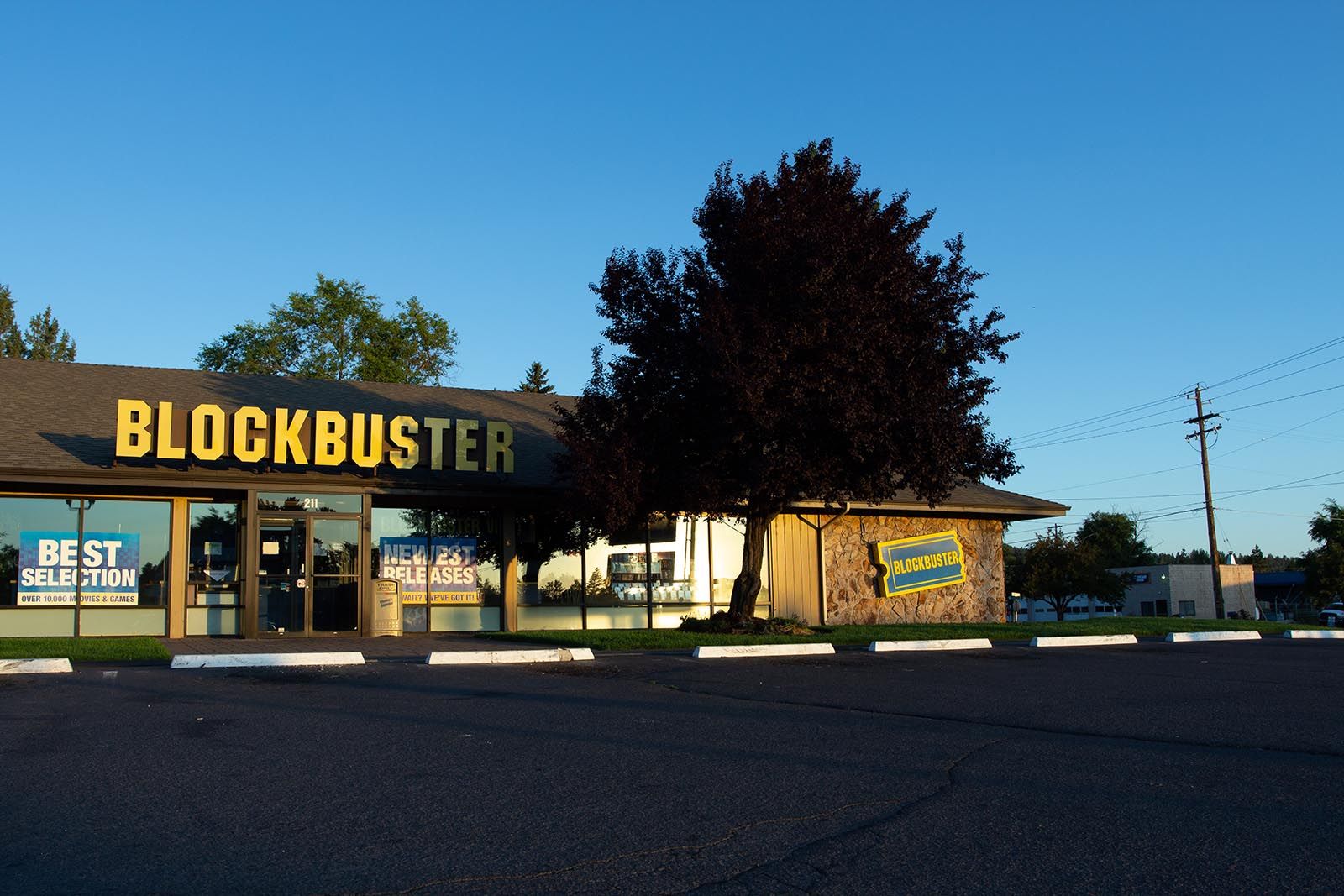
The last Blockbuster stands firm in Oregon, USA © Shutterstock
Threat: Modernization
In the outdoorsy city of Bend, Oregon, people can ski in the morning, kayak in the afternoon and play golf as the sun sets. Or, for an adventure of a different kind, they can visit the last Blockbuster store on earth. In stubborn defiance of the streaming age, the store still rents DVDs, Blu-rays, and video games. A haven of nostalgia for Millennials, it draws tourists eager to relive the video rental experience of their youth. Once a global chain with 9,000 US locations, Blockbuster collapsed after Netflix's rise.
Bend’s store is the sole survivor, outlasting even the final holdouts in Alaska and Australia. Today, it leans into its cult status, selling merchandise bearing its slogan: ‘til the bitter end. But once the nostalgia-driven crowds eventually dwindle, will the world’s last Blockbuster find a way to endure?

Women wearing traditional dress in Kihnu, Estonia © Shutterstock
Threat: Migration
Kinhu is a small Estonian island in the Baltic Sea powered by the hands of mothers, sisters and aunts. With men away at sea or working abroad, the role of women has expanded into every corner of life.
Kinhu’s women sew, farm, raise children, repair engines, bury the dead and preserve centuries-old textile traditions. Known as Europe’s “Island of Women,” Kihnu is often called the continent’s last matriarchy, though locals prefer “matrifocal.” They point out that, while women keep the island running – literally and figuratively – men’s work is equally important for sustaining island culture.
In 2008, UNESCO recognized the way of life on Kihnu as Intangible Cultural Heritage. Yet the island’s future is uncertain, as youngsters leave and traditional livelihoods grow harder to sustain. As Kinhu’s women try to shape a future that balances tradition with modern life, tourism offers a lifeline.
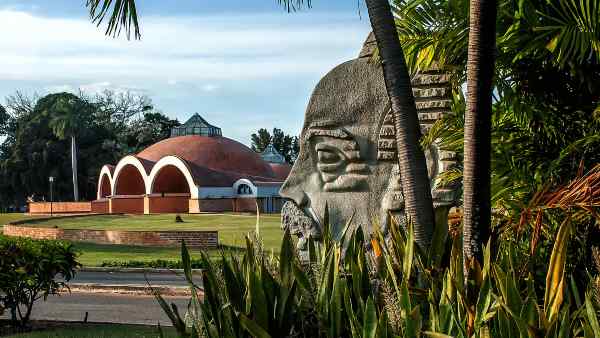
The National School of Art, Havana, Cuba © Shutterstock
Threat: Neglect
Cuba’s National Art Schools, an idea born during a 1961 golf match between Fidel Castro and Che Guevara, were meant to embody post-revolution creativity.
Built on the former Havana Country Club, Cuban architect Ricardo Porro and two Italian designers created a campus with five schools for ballet, music, plastic arts, dramatic arts, and modern dance. Their revolutionary designs used local materials and radical, curving forms, including arched walkways, domes, and spirals that captured artistic energy.
However, like so many utopian dreams, it was derailed by changing political currents. By the mid-1960s, Soviet-aligned officials dismissed the project as impractical and extravagant, and withdrew funding. Overgrown and unfinished, the site was listed as endangered in 2000, and declared a Cuban National Monument in 2011. Though restoration efforts have been patchy, the dream still lingers, awaiting full revival through a yet-to-be-implemented preservation plan.
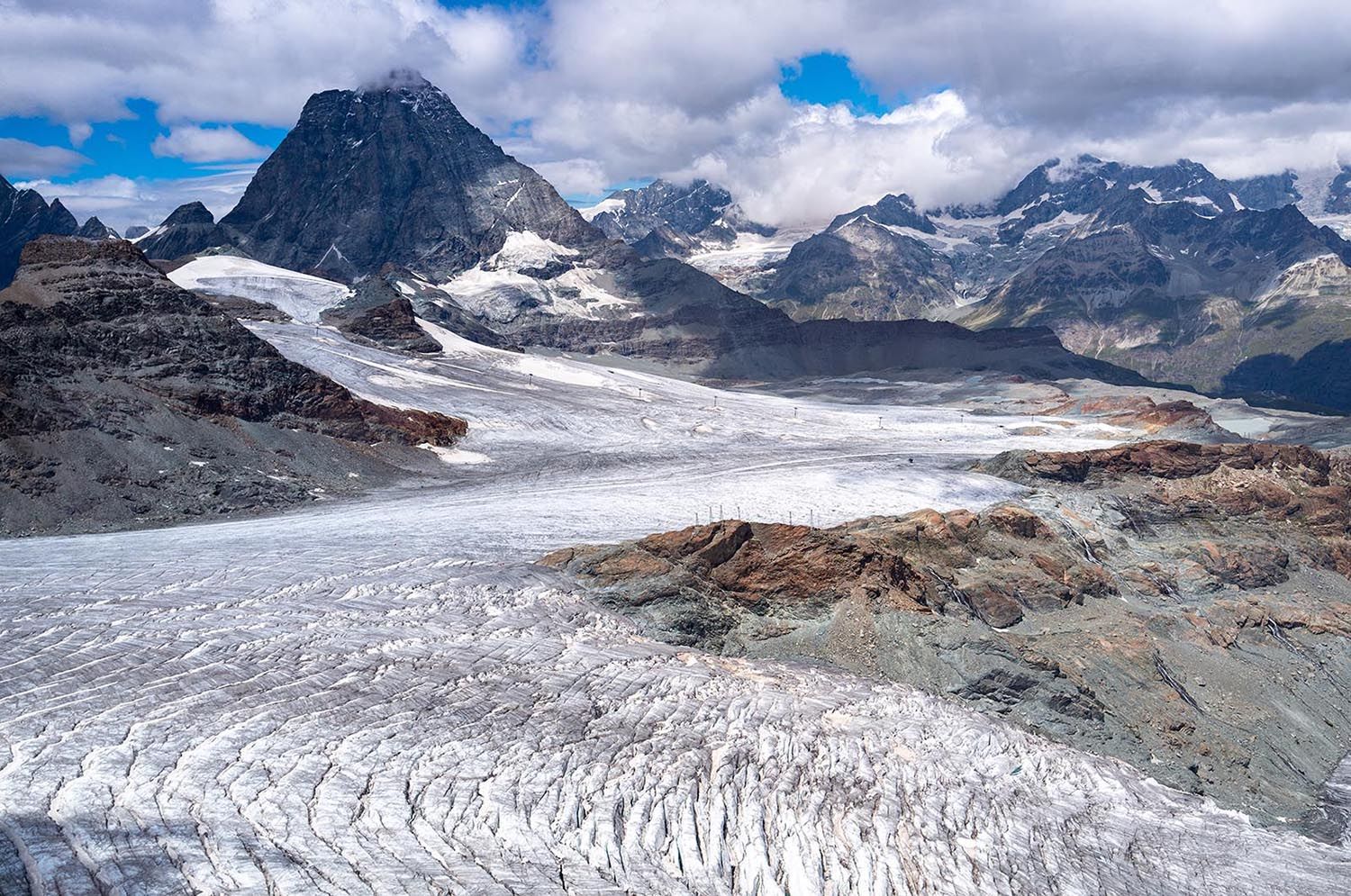
Switzerland's Theodul glacier, with the Matterhorn looming behind it © Shutterstock
Threat: Climate change
In 2023, climbers crossing the Theodul glacier, above Zermatt in Switzerland, spotted a hiking boot and crampons protruding from the ice. They had stumbled across the remains of a German climber missing since 1986.
Other lost relics have been uncovered in the ice in recent years, as climate change forces Swiss glaciers to retreat. Between 2022 and 2023, Switzerland lost 10% of its glacier volume, the same loss as the previous 30 years.
The melt threatens freshwater supplies crucial for rivers, farming, and power, and even causes national borders to shift. In 2024, Switzerland and Italy were forced to renegotiate territorial lines that had been frozen in place for centuries. Some glaciers have vanished entirely, and experts warn that icons like Aletsch could follow within a generation.
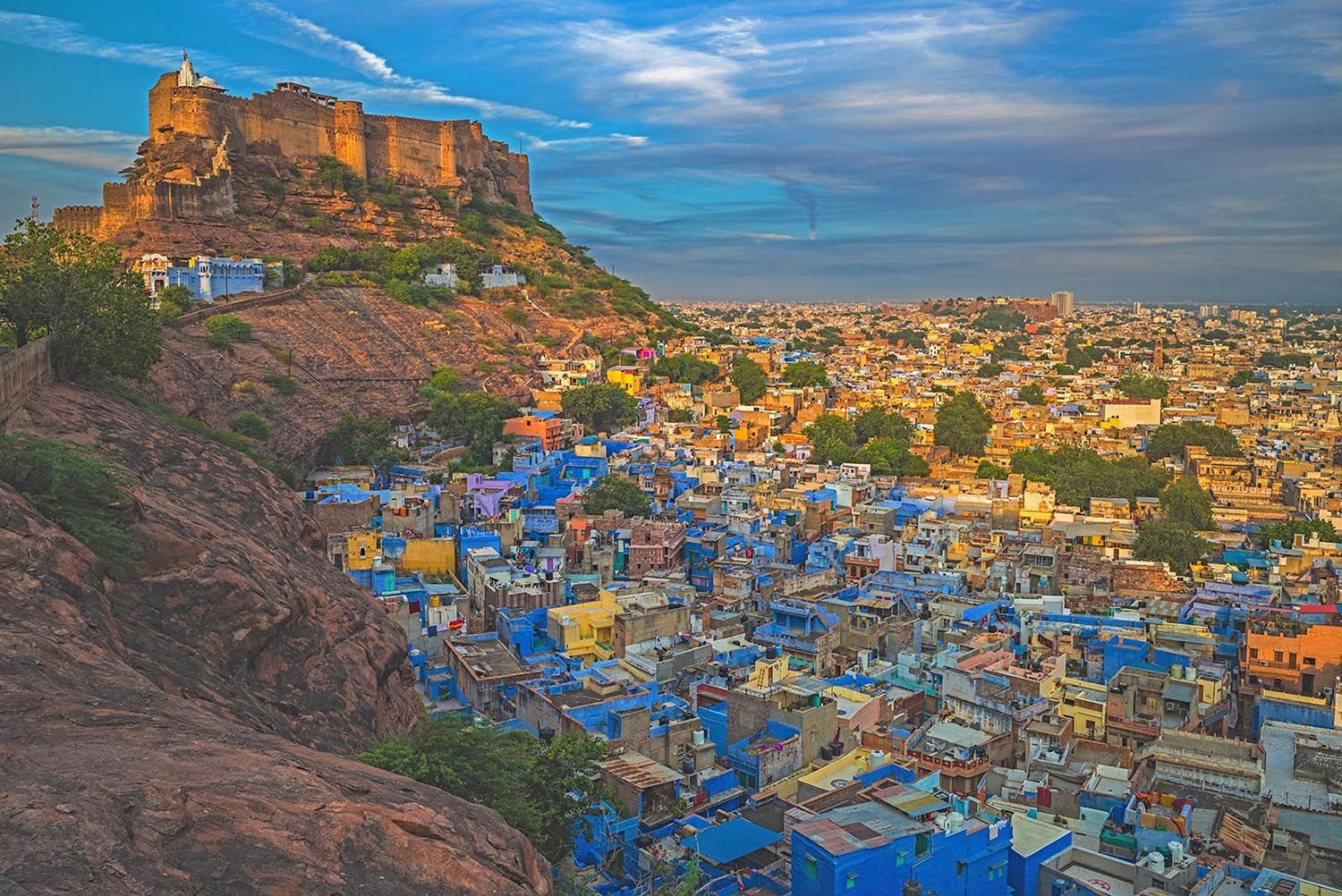
The Blue City, Jodhpur in Rajasthan, India © Shutterstock
Threat: Modernization
The vivid blue houses In Jodhpur’s Brahmapuri district have long drawn tourists and selfie-seekers. Once a symbol of upper-caste piety, the blue dye also cooled homes and repelled pests when mixed with lime plaster.
However, the tradition is fading. Natural indigo is now scarce and expensive, and modern materials like cement don’t hold the pigment well. Rising temperatures have made air conditioning more appealing to residents than blue paint. As fewer locals repaint their homes in the iconic shade, the city risks losing both its historic identity and the tourist appeal it relies on. Community groups are pushing to restore lime plaster and preserve the color. So far, they’ve raised funds to repaint 500 homes annually, and they vow to keep fighting to keep Jodhpur blue.

The Church of Saint George, one of Lalibela's eleven rock-hewn churches © Shutterstock
Threat: Erosion
In Lalibela, in northern Ethiopia, thousands of white-robed pilgrims gather at dawn to worship at 800-year-old rock-hewn churches. The structures were carved from volcanic stone by hand, and some say the masons were helped by angels.
Built in the 12th century by order of King Lalibela, who dreamed of creating an African Jerusalem, these sacred structures are now under threat. Cracks, erosion, and crumbling walls signal serious decay.
Conservation is delicate: even inserting a pin to stabilize a wall requires a priest’s blessing, and when the pin hole is drilled, the sacred dust is carefully preserved. Temporary metal shelters were installed over the churches in 2008. They are still in place, sparking concern they might collapse. Ethiopia’s Orthodox Christians believe the rock-hewn churches will stand strong until Judgement Day. With the dedication of priests, pilgrims, conservationists and responsible tourists, they just might.
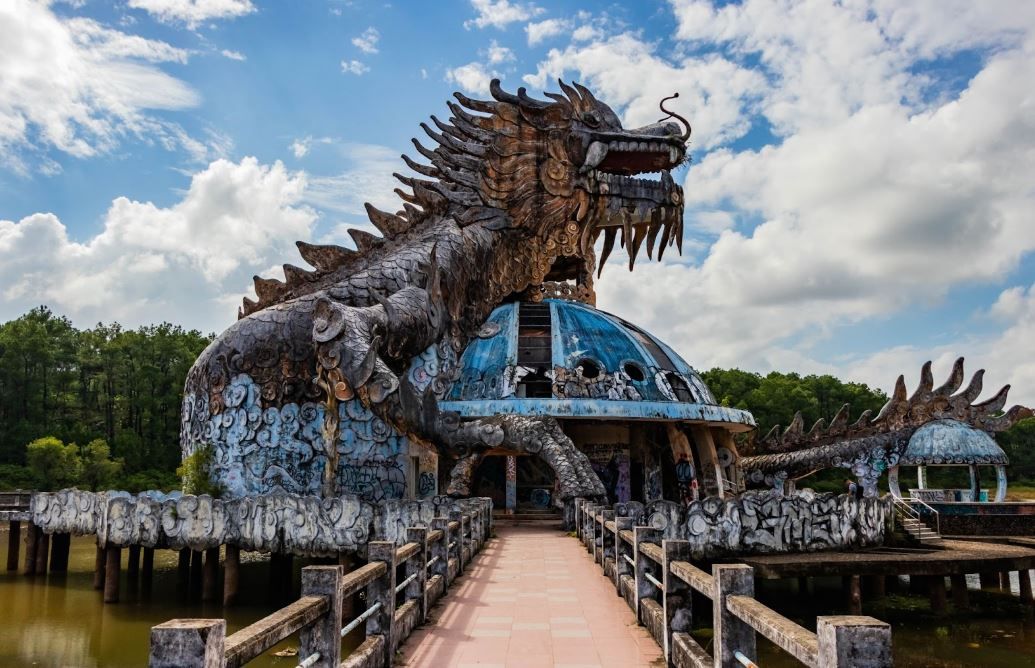
The foreboding dragon at Hồ Thủy Tiên water park, Vietnam © Shutterstock
Threat: Neglect
A colossal dragon rises from the lake in Vietnam’s abandoned Hồ Thủy Tiên water park, its gaping jaws framing a view of the park’s rusted slides and moss-covered ruins. The attraction near Huế city opened in 2004, but mysteriously shut down after just a few years, leaving nature to reclaim it.
Rumors of hauntings and blood-red waters gave it cult status among urban explorers, and its ghostly beauty has drawn countless vloggers and travelers. In 2023, the land was sold to a private company, which plans to dismantle the dragon and hand the site to Huế City. Though a public park is planned, delays persist. For now, Hồ Thủy Tiên remains, haunting, decayed, and still welcoming the curious. Time is running out to explore its secrets.
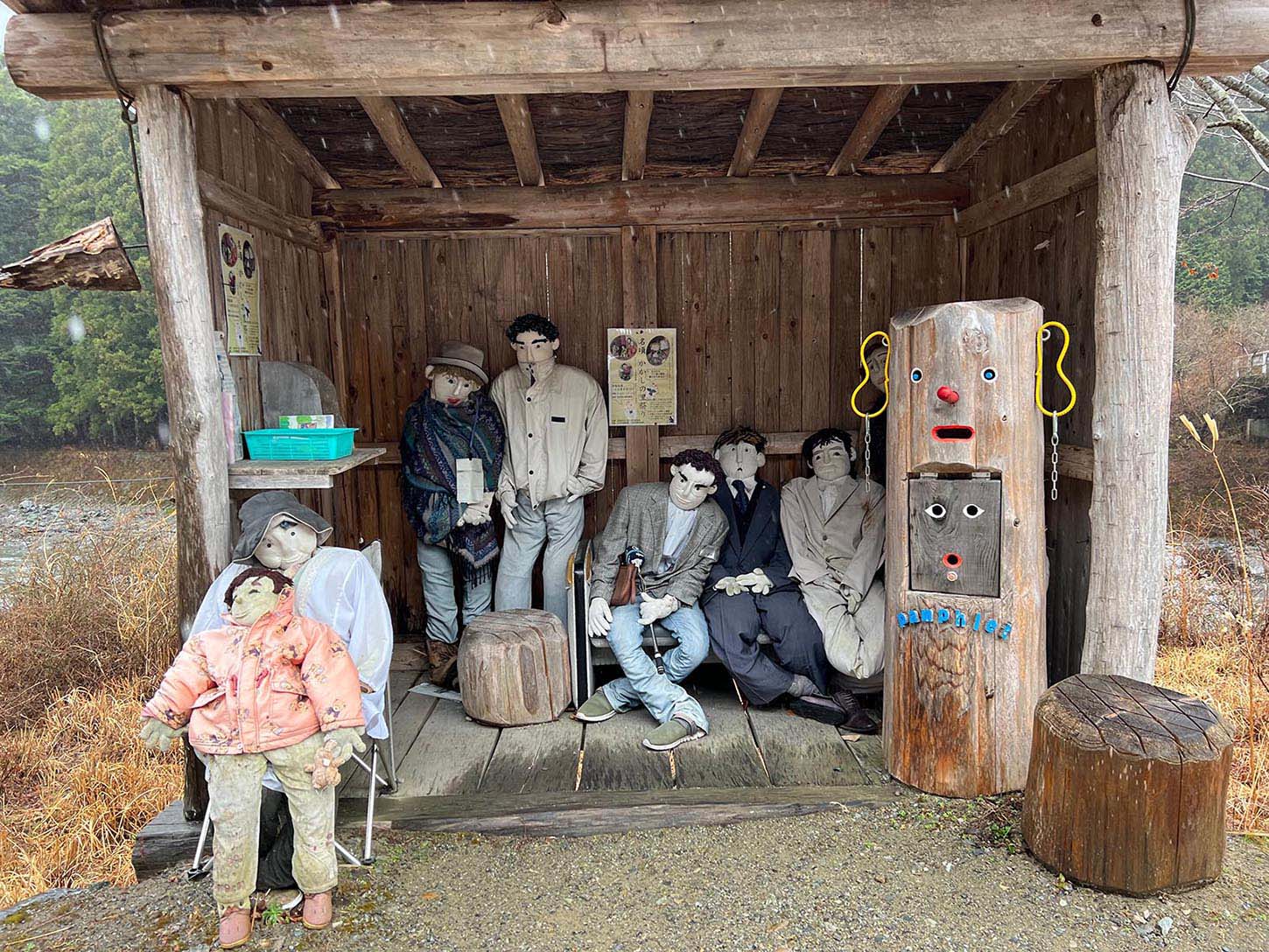
Straw residents of Nagoro, Japan's scarecrow village © Shutterstock
Threat: Depopulation
If you drive through the remote village of Nagoro, in Japan’s untamed Iya Valley, you’ll pass villagers waiting at bus stops, tending fields and fixing telephone lines. But, wave to these folk, they won’t wave back – because the vast majority of residents are made of straw.
With a population of just 25 people and over 400 life-sized scarecrows, the village has become a surreal symbol of Japan’s rural depopulation crisis. Each scarecrow has a name and story, and they’re all crafted by one woman, Tsukimi Ayano. In 2002, saddened to see so many of her neighbors moving to the city, Ayano began replacing them with straw figures.
The straw population boomed, eventually making the town a quirky tourist destination. Ayano has mounted her own quiet resistance to Japan’s emptying countryside. Thanks to her, more people are appearing in Nagoro with every passing year - both straw and human.
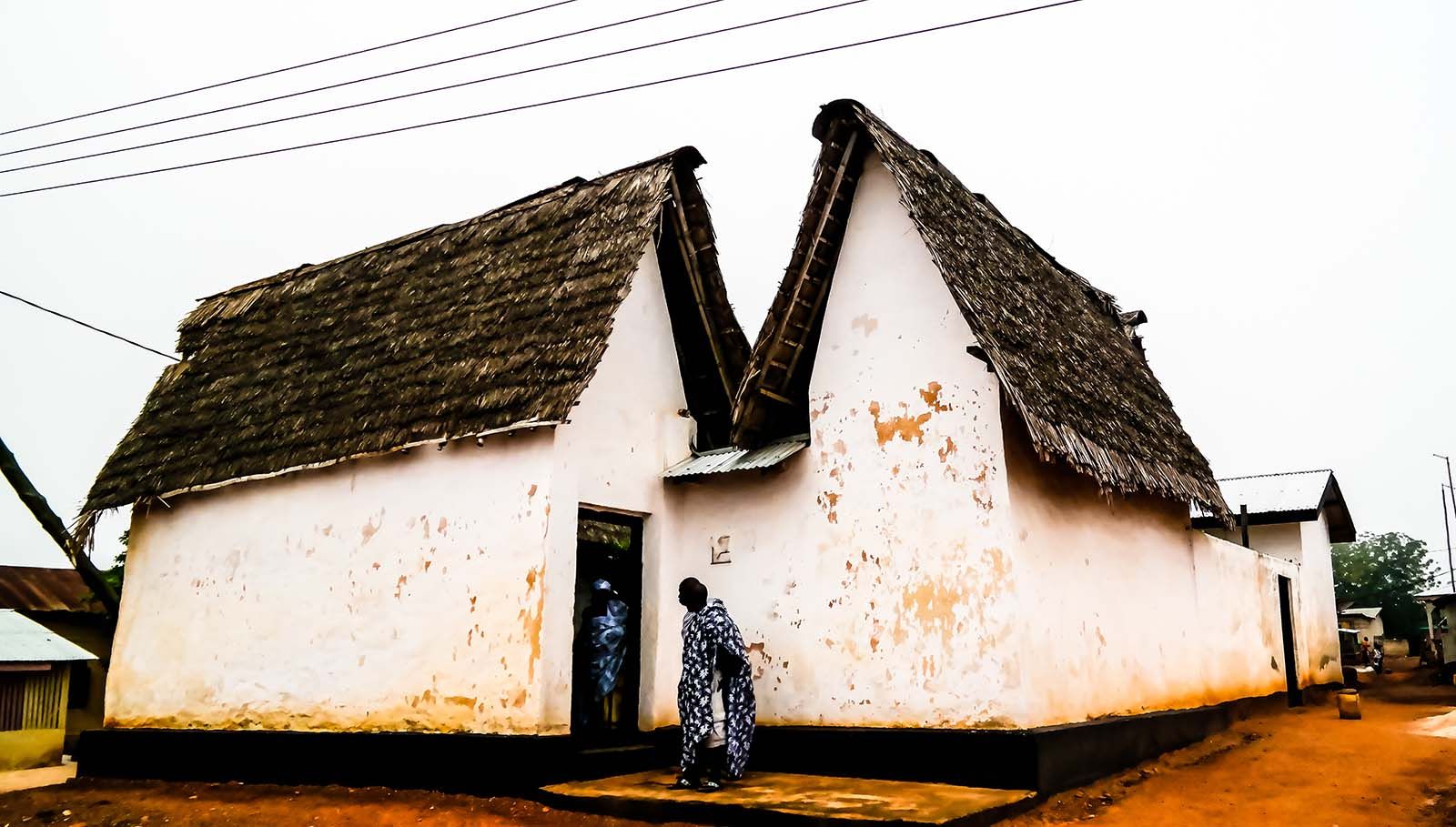
A remaining traditional Asante Shrine in Kumasi, Ghana © Shutterstock
Threat: Neglect
Asante was once one of the most powerful states on the African continent, but most of the architecture indigenous to the 18th and 19th century kingdom has been lost to time. Only ten traditional Asante buildings are believed to remain – earthen shrine houses made of timber, bamboo, and mud plaster. These sacred spaces are adorned with birds, plants and crocodiles, symbolic murals that would have been understood perfectly by the people of the time. Asante culture is known for non-verbal communication. A common motif, the Sankofa bird with its head turned backwards, reminds people to look to the past for guidance.
Time and Ghana’s harsh tropical climate threaten their survival, and modern materials have replaced traditional methods. Though listed as UNESCO World Heritage since 1980, long-term preservation plans are lacking. Experts say the key lies in training local communities to revive and maintain ancient Asante building techniques, before these rare cultural treasures vanish.
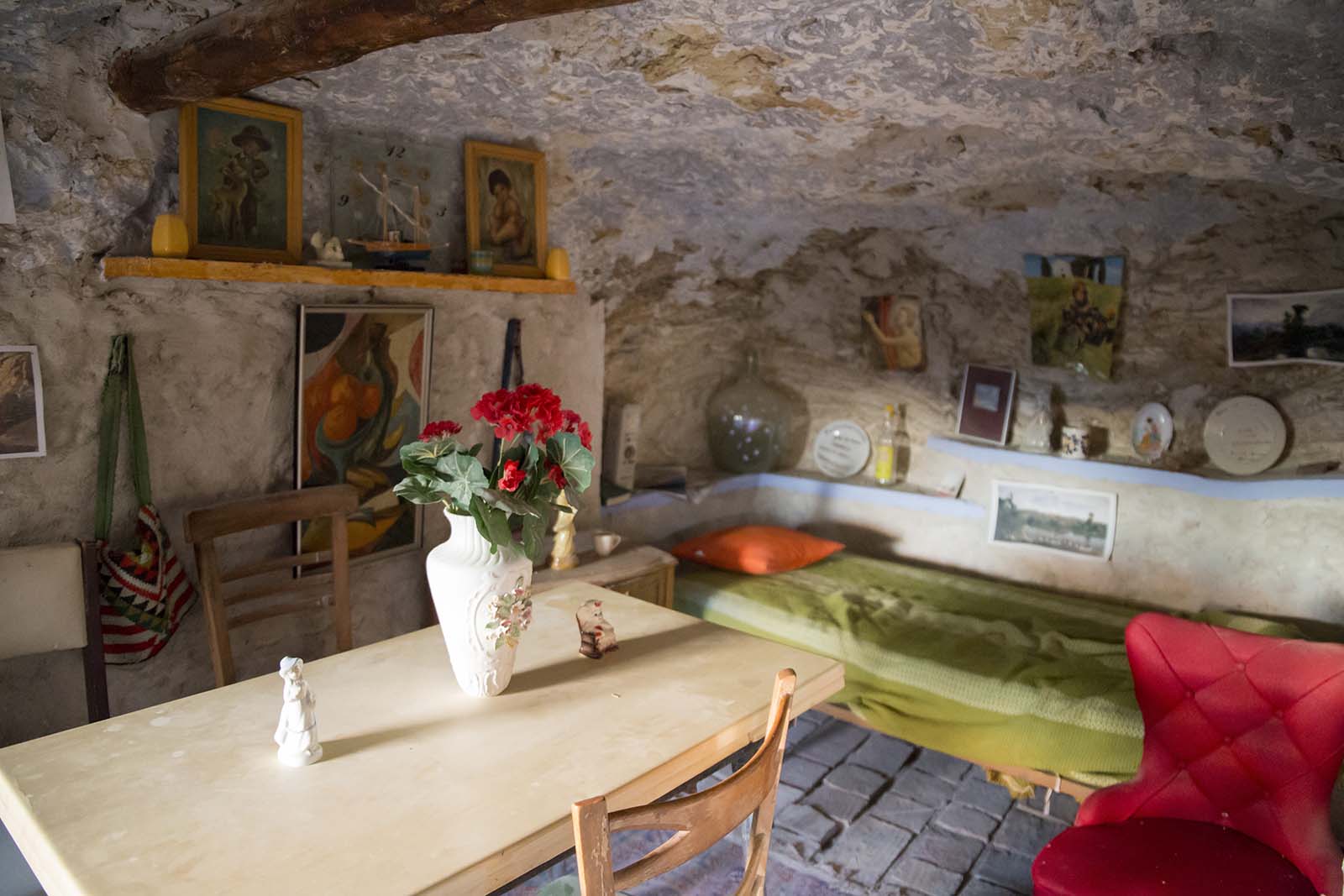
A quiet home in Libros in Teruel, Spain © Shutterstock
Threat: Depopulation
“Tourists go home!” chanted the residents of Barcelona, Alicante, and Seville during their 2024 protests against a tide of mass-tourism. Yet, rural regions like Aragón and Castile and León are suffering from the opposite problem: depopulation. These areas, mostly in Spain’s vast interior, missed out on the development boom and now face dwindling ageing populations, as youngsters move to cities. In Teruel, the village of Libros has under 100 residents and no children.
Locals hope to revive Libros by embracing its name (Spanish for “books”) and turning the village into a literary hub. Streets will be renamed after famous authors and a hotel-library is planned. National incentives to lure people to the countryside, including tax breaks and free schooling, have had mixed success. Yet, small-scale rural tourism projects, like those in Libros, may offer a lifeline to Spain’s vanishing villages.
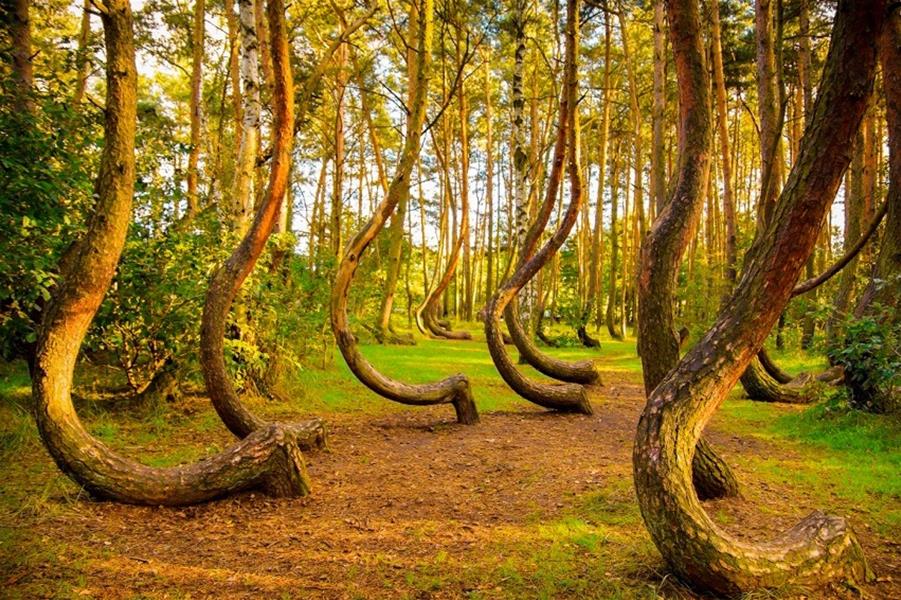
Gryfino's mysterious crooked forest © Shutterstock
Threat: Ageing
In a quiet corner of western Poland, near Gryfino town, the Crooked Forest holds around 100 pine trees with trunks that all bend sharply, like dancers mid-bow. Planted in the 1930s, their unusual shapes remain a mystery, possibly caused by human intervention for making curved sleighs. Once numbering 400, the 100 remaining trees are now nearly a century old and increasingly fragile. Tourists drawn by social media have unwittingly damaged branches by climbing them.
To preserve the site, foresters planted 1,000 new pines in 2021. Half were grown from original seeds and will grow naturally, while the rest will be shaped to match the crooked trees. In a few years, visitors will see the new generation starting to take shape, perhaps solving to the enduring mystery – was the Crooked Forest crafted by human hands, or by nature?
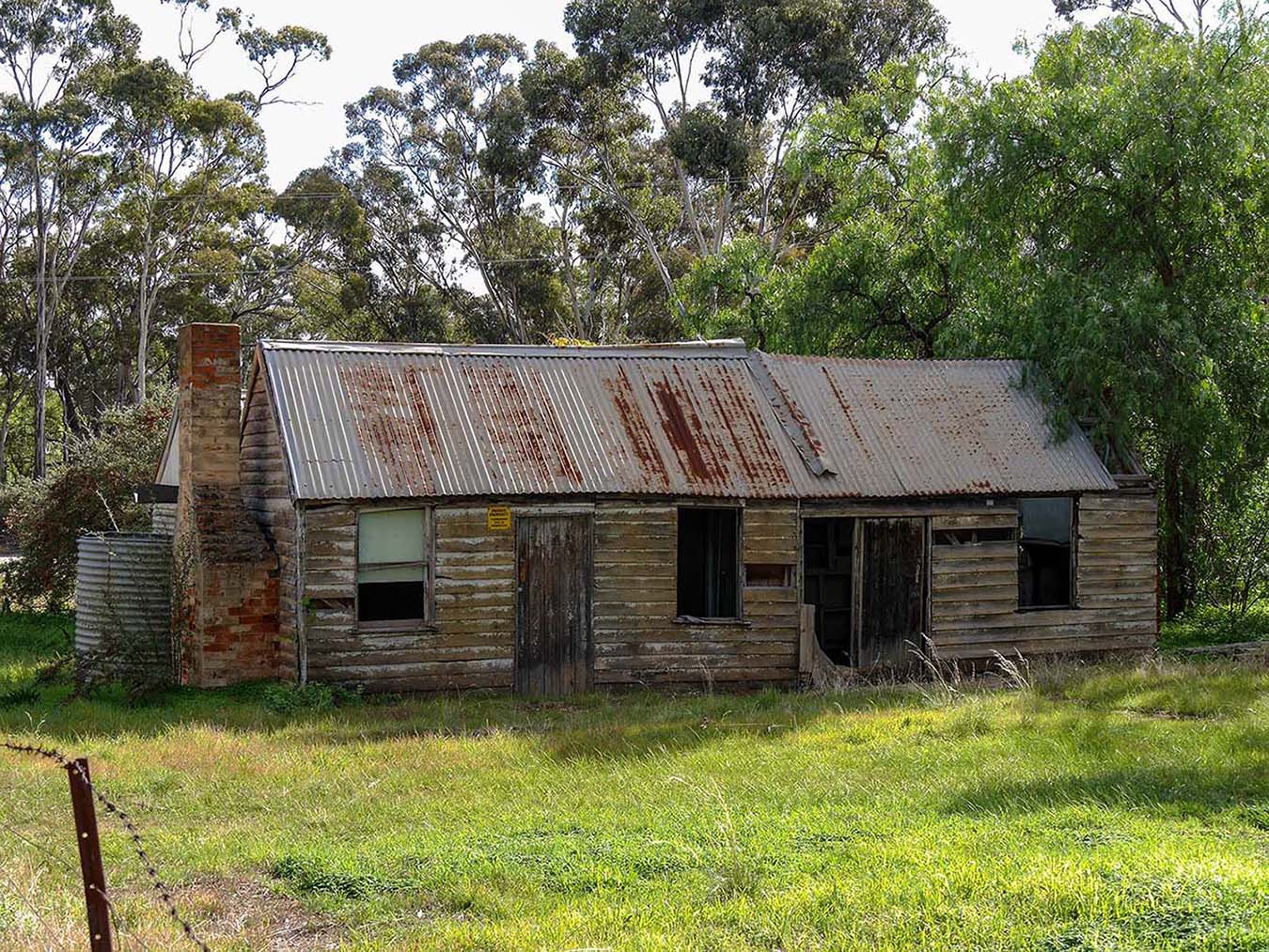
A derelict wooden house in Llanelly, Victoria, Australia © Shutterstock
Threat: Loss of industry
The forgotten Welsh mining village of Llanelly in southeastern Australia is a ghost of a once-thriving gold rush. In the 1860s, Welsh miners struck it rich and built a village, naming it after their hometown. Nearby Tarnagulla also boomed after four Welsh business partners (all named John) unearthed one of the most valuable quartz gold deposits in the world, in 1868 on the ironically named Poverty Reef.
Millionaires were made and ladies were lowered into the mine in gowns, invited to chip out gold. By the late 19th century, the gold ran out and both towns declined. Today, Llanelly is nearly abandoned, with a handful of houses and a cemetery bearing Welsh names. Tarnagulla has 150 residents and welcomes occasional prospectors. A few daring mine-shaft chasers still explore the ruins, uncovering relics of Australia’s short-lived gold fever.
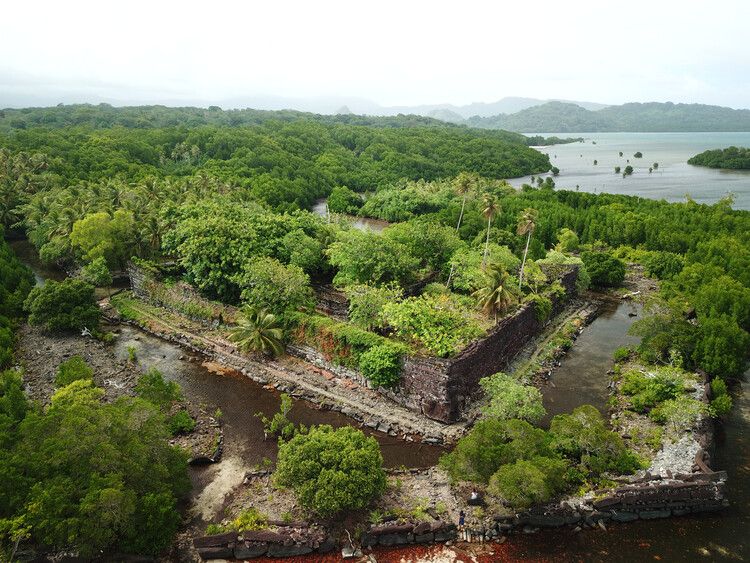
The ancient stone city of Nan Madol, overgrown with palms © Shutterstock
Threat: Erosion
Hidden in a mangrove lagoon near Pohnpei Island in Micronesia, lies Nan Madol, a mysterious city of nearly 100 man-made islets linked by canals. Built around 1200, its basalt pillars – some as heavy as elephants – came from distant places. How they were moved is one of history’s most tantalising mysteries, with legends crediting giants, dragons, or sorcery.
To this day, Nan Madol remains shrouded in secrecy. Visitors have been known to seek the King’s permission and drink ceremonial kava before entering. UNESCO categorises Nan Madol as both culturally vital and at risk, as storms and vegetation erode its foundations, threatening to destroy what remains of the city. Recent scans have uncovered 90 previously hidden structures, but much still remains unknown. Nan Madol’s future, like its past, is cloaked in mystery.
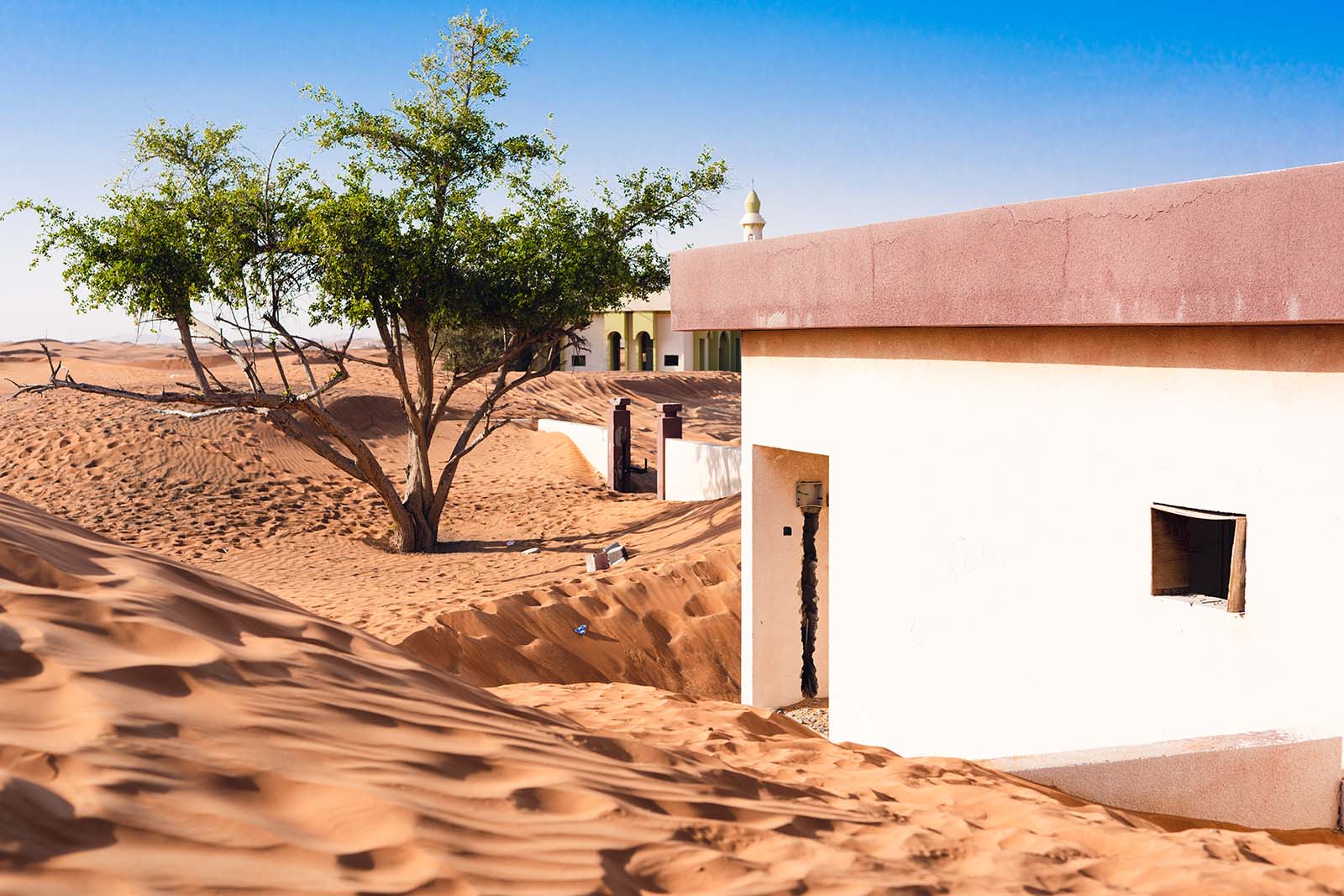
An abandoned house in Sharjah’s desert © Shutterstock
Threat: Desertification
In the desert near Sharjah, the abandoned village of Al Madam – now known as the Ghost Village – lies half-buried in sand. Built in the 1970s to house Bedouin families, it was mysteriously deserted after just two decades. Residents are rumored to have fled in a hurry, leaving possessions behind and doors ajar. Locals blame either brutal sandstorms or a supernatural spirit called Umm Al Duwais, with cat-eyes and machetes for hands.
The village’s identical houses and mosque now sit in chilling silence. A viral social media video helped boost its spooky reputation, and locals now lead daily tours for visitors. In 2023, Sharjah’s ruler announced plans to preserve the site. For now, visitors are free to explore this haunting relic of modernization and myth.

The Manhattan of the desert: Shibam, Yemen © Shutterstock
Threat: Civil war, erosion
In Yemen’s Wadi Hadramaut valley, the 16th-century city of Shibam rises from the desert in a cluster of mud-brick skyscrapers. Dubbed “the Manhattan of the desert,” Shibam is the oldest city built using vertical construction, with mud towers up to seven storeys tall. Once a key stop on ancient trade routes, its design showcases one of the earliest examples of urban planning.
However, the city faces severe threats from erosion, flooding, and Yemen’s ongoing civil war. A major flood in 2008 led to restoration efforts, now hindered by conflict and scarce resources. The fragile city is listed as a UNESCO World Heritage Site in Danger, and will welcome responsible tourism as soon as travel to Yemen is safe and feasible again.
Discover more fascinating at-risk places in our inspiring new book, Vanishing Places - available to purchase now from wherever you buy your books.
written by
Amy Hopkins
updated 19.10.2025
Use Rough Guides' trusted partners for great rates
Discover undefined's most captivating stories
Arrange your trip, hassle-free, with local travel experts
Arrange your trip with local travel experts